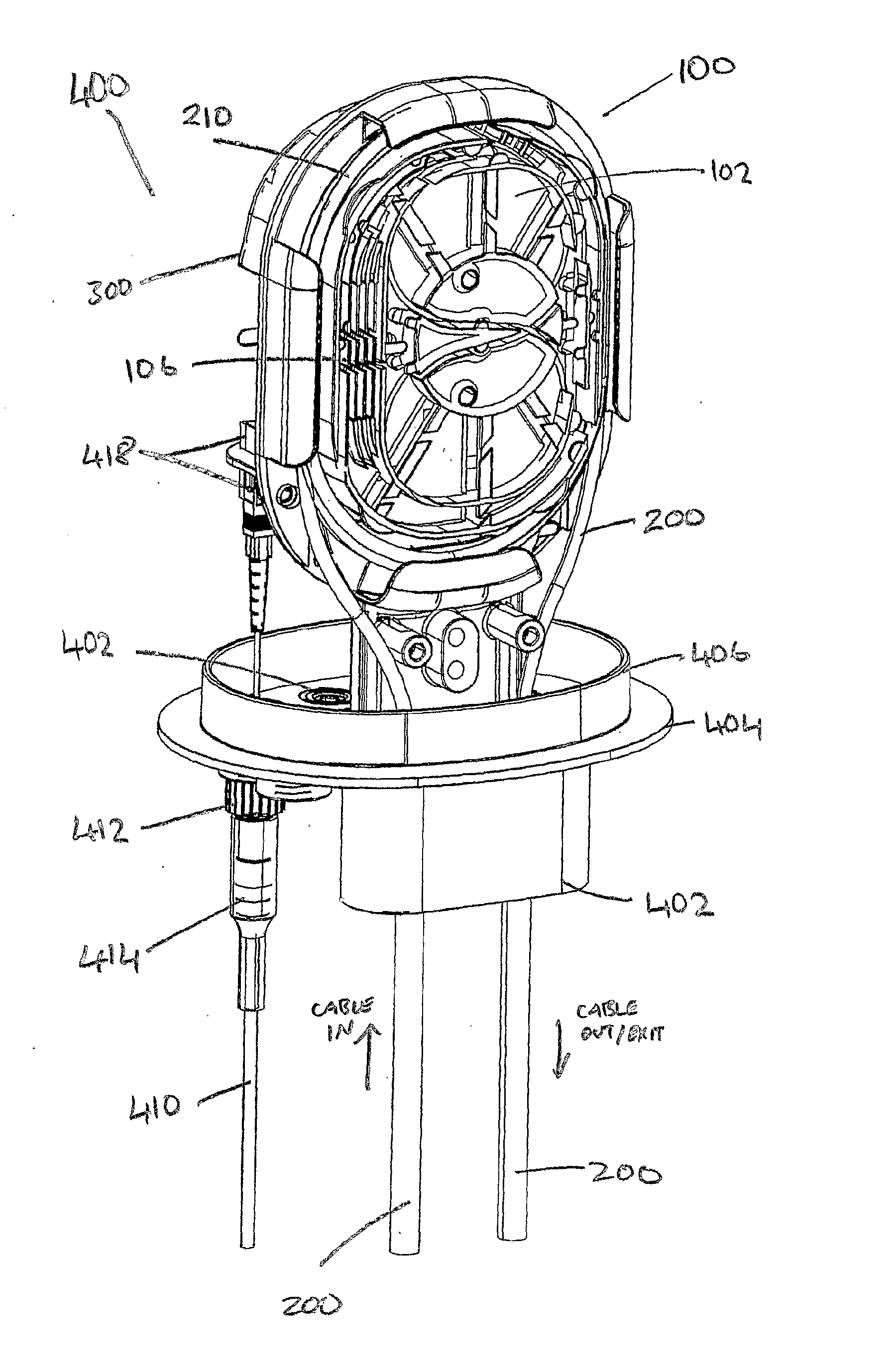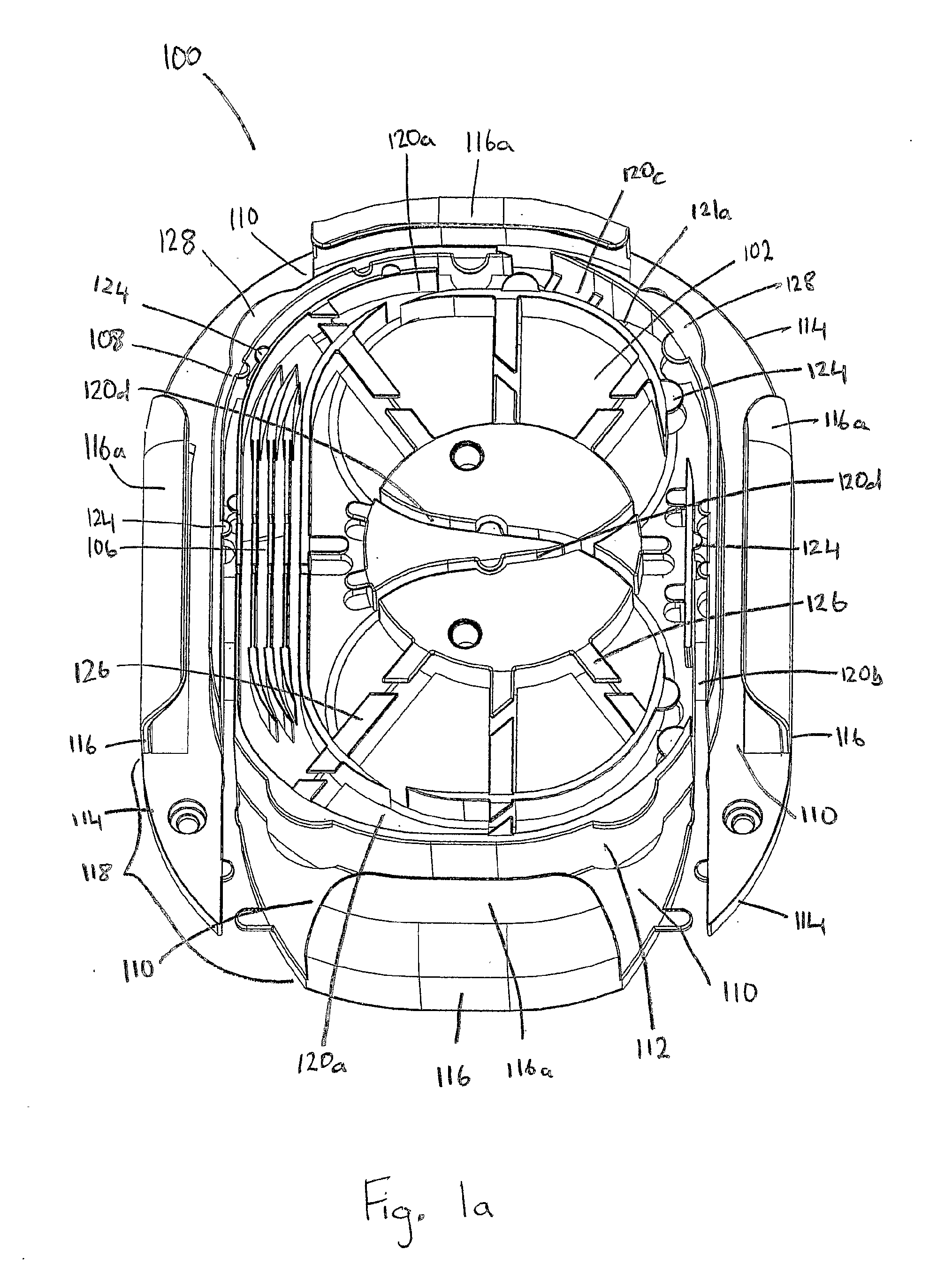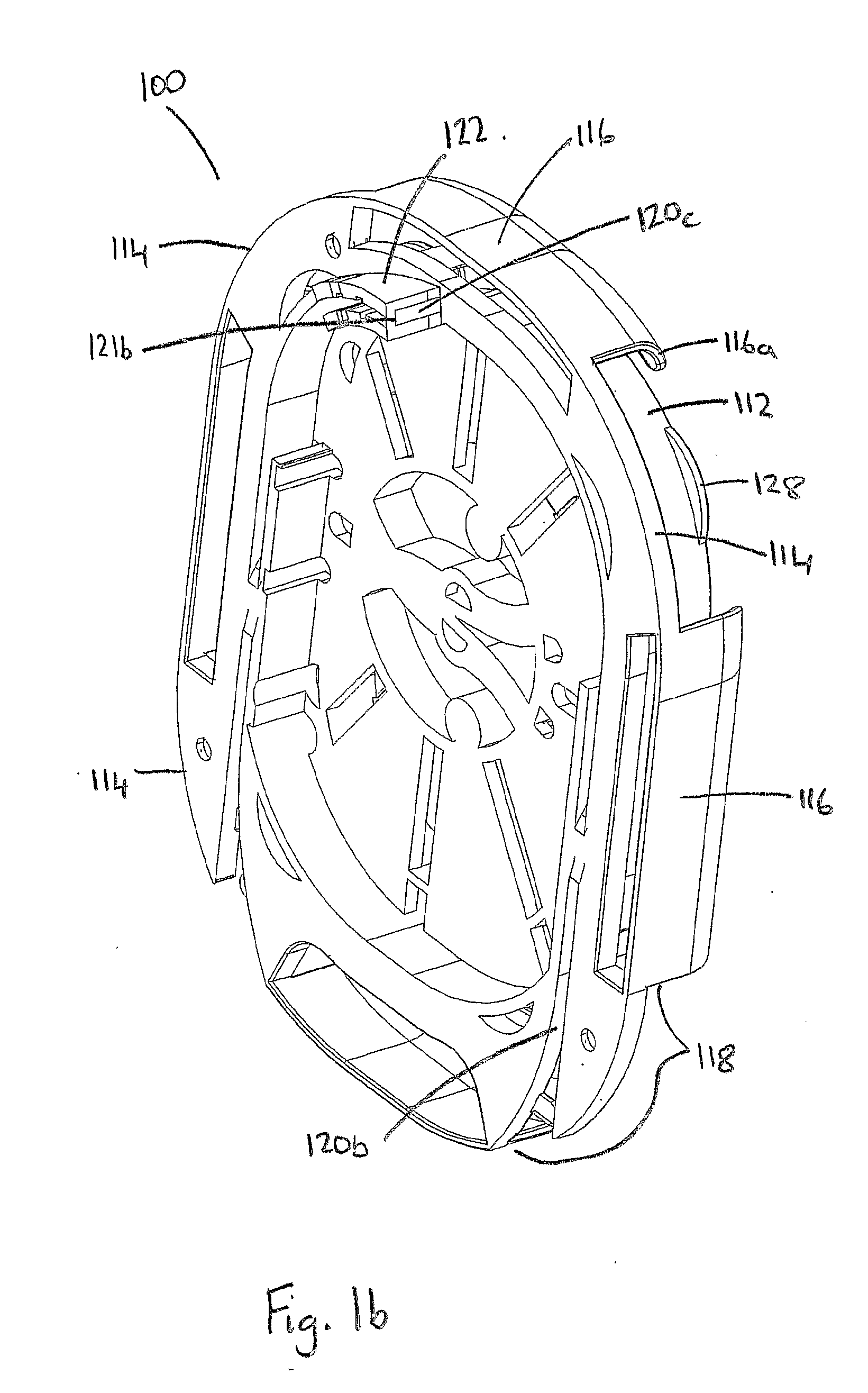Cable loop device for optical systems
- Summary
- Abstract
- Description
- Claims
- Application Information
AI Technical Summary
Benefits of technology
Problems solved by technology
Method used
Image
Examples
Embodiment Construction
[0073]Two perspective views of a cable loop device 100 for storing, routing and distributing optical cable and optical fibres in an optical system is shown in FIGS. 1a and 1b. Plan and left side elevations of the cable loop device 100 are shown in FIGS. 1c and 1d.
[0074]Referring to FIGS. 1a to 1d, a brief overview of the cable loop device 100 is now given followed by a detailed description of its components and use. The cable loop device 100 includes a fibre storage area 102, a mandrel 104 centrally located within the fibre storage area 102 and a work area 106.
[0075]According to the embodiment shown in the figures, the work area 106 includes four splicing bays. However, the work areas 106 could include other types of bays for working an optical fibre such as by coupling, splitting, terminating or the like. The fibre storage area 102 and work area 106 are enclosed by the periphery 108 of the cable loop device 100. The cable storage areas 110 are disposed on the periphery 108 of the ...
PUM
 Login to View More
Login to View More Abstract
Description
Claims
Application Information
 Login to View More
Login to View More - R&D
- Intellectual Property
- Life Sciences
- Materials
- Tech Scout
- Unparalleled Data Quality
- Higher Quality Content
- 60% Fewer Hallucinations
Browse by: Latest US Patents, China's latest patents, Technical Efficacy Thesaurus, Application Domain, Technology Topic, Popular Technical Reports.
© 2025 PatSnap. All rights reserved.Legal|Privacy policy|Modern Slavery Act Transparency Statement|Sitemap|About US| Contact US: help@patsnap.com



